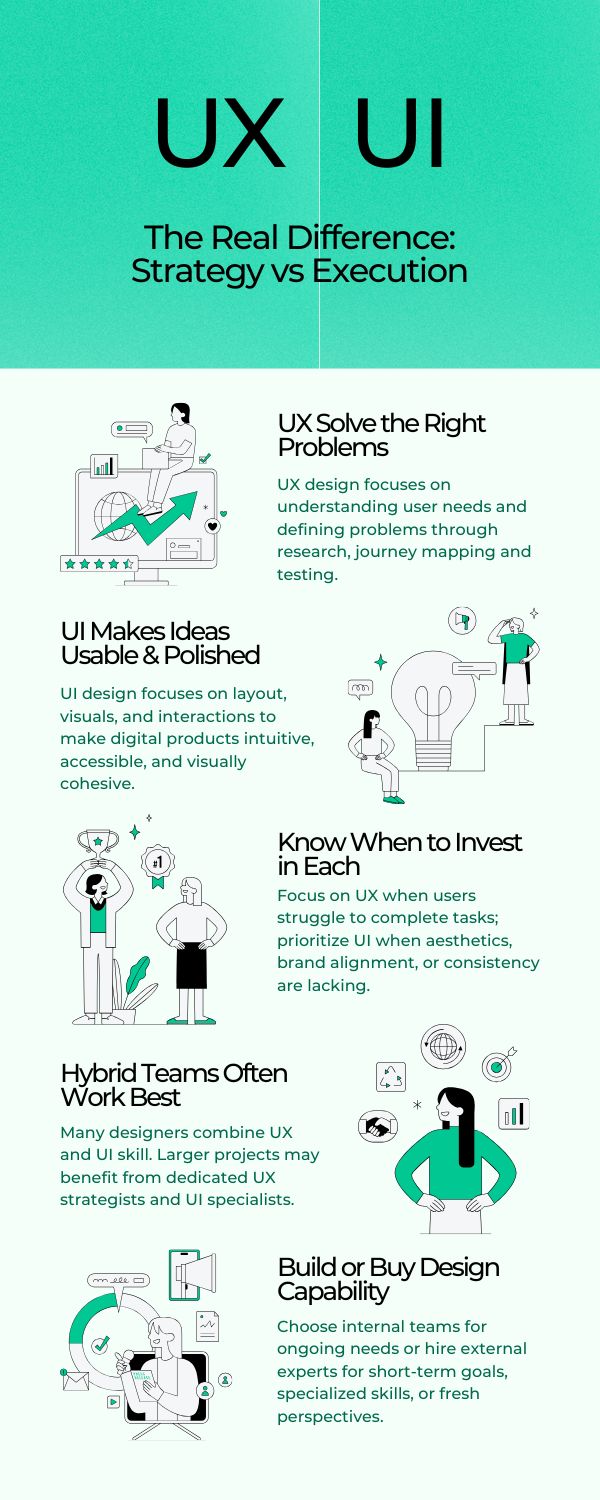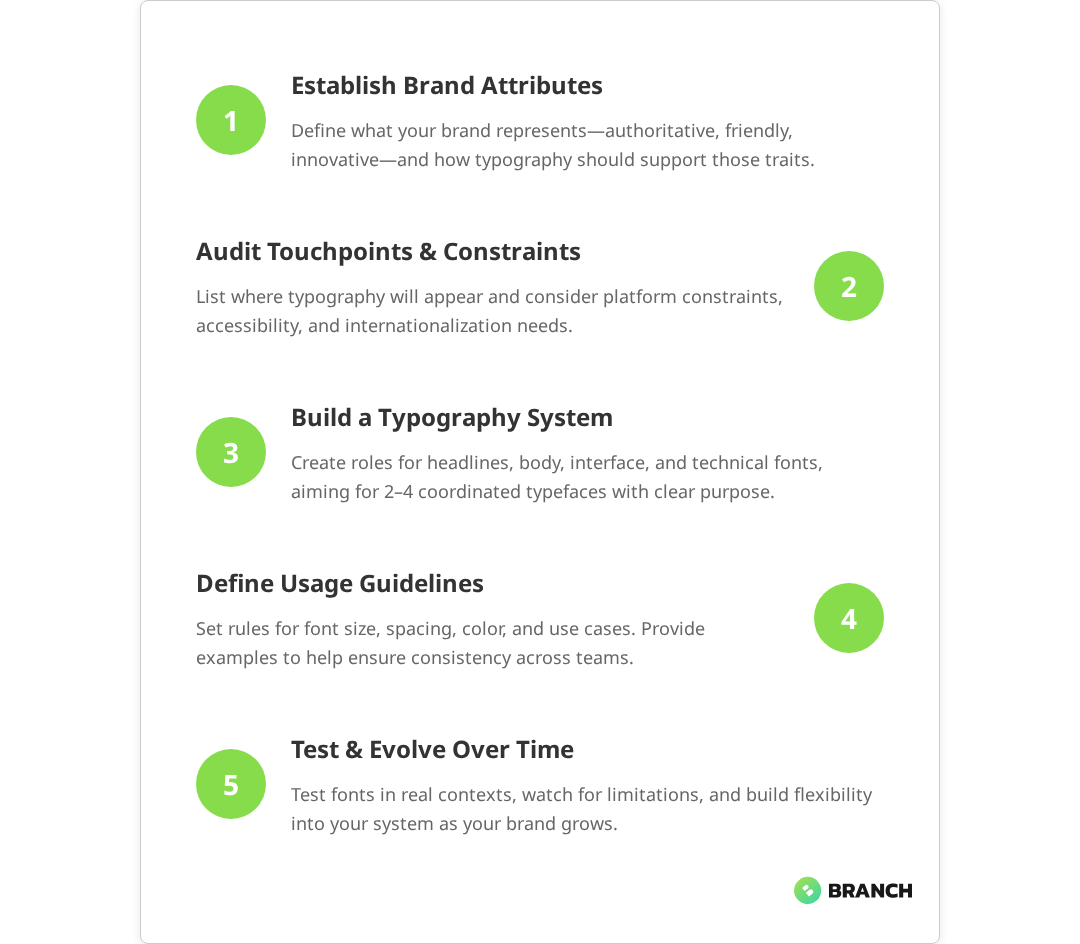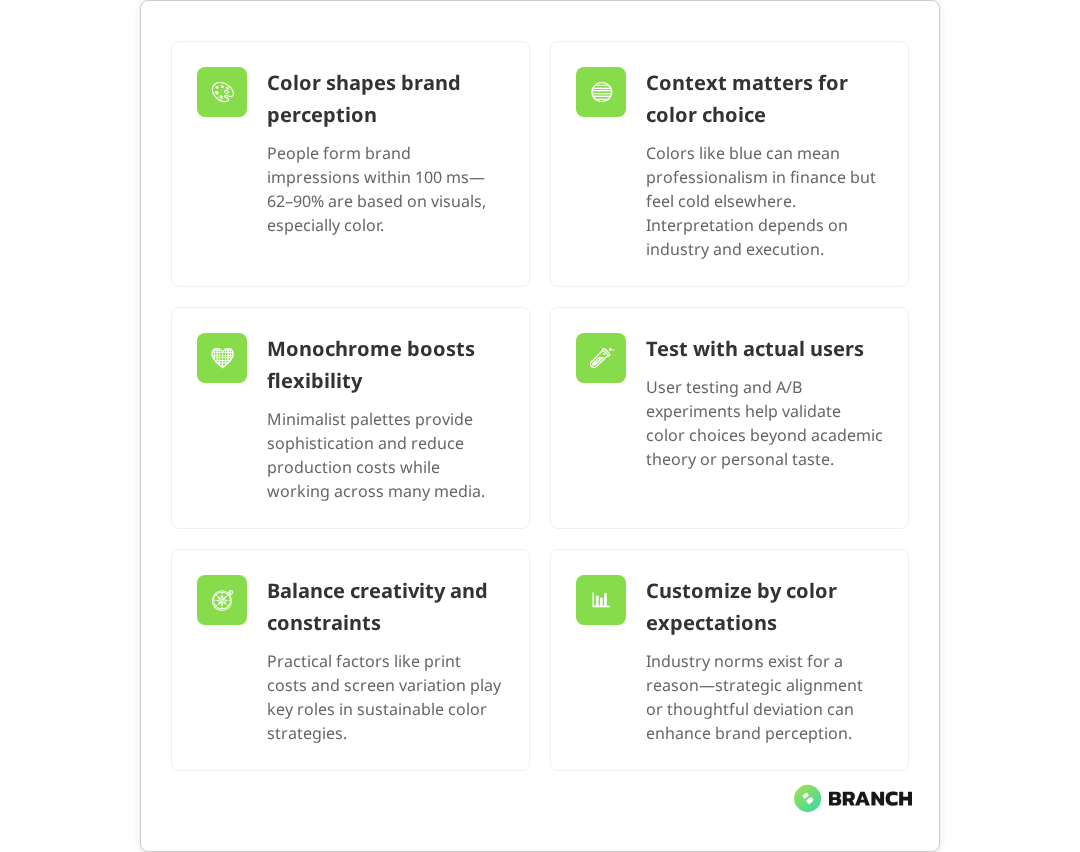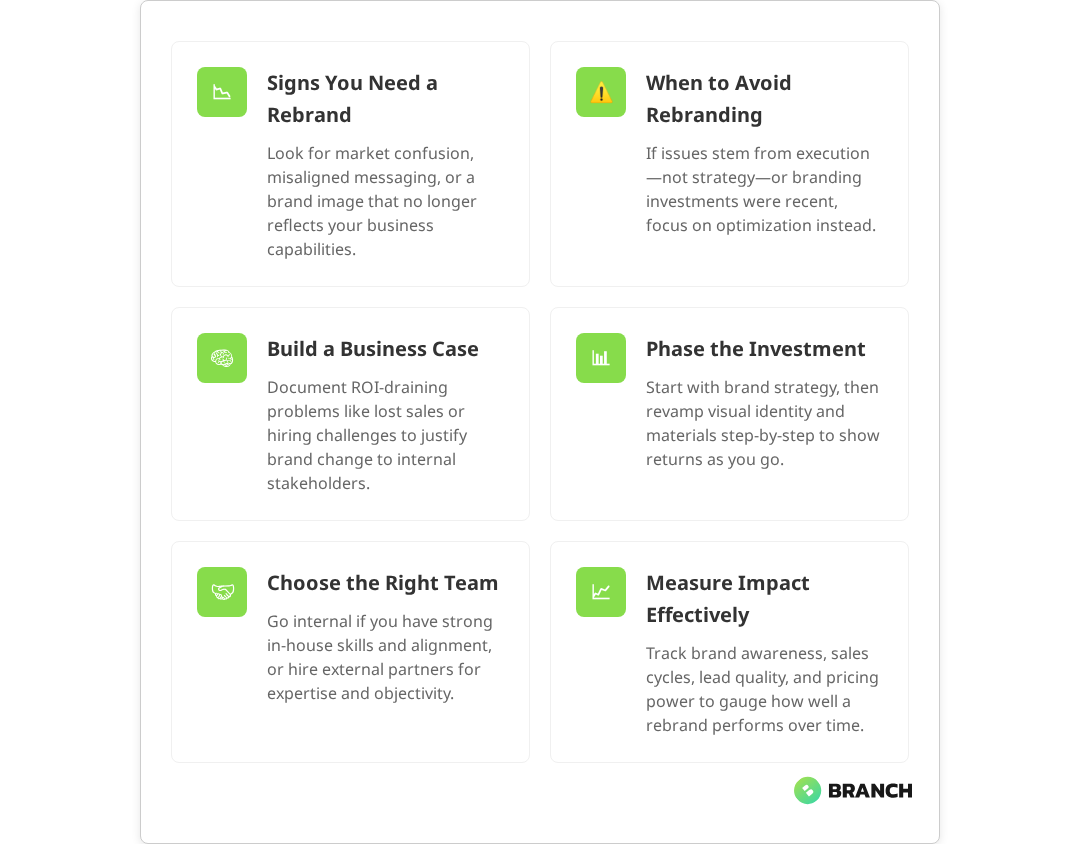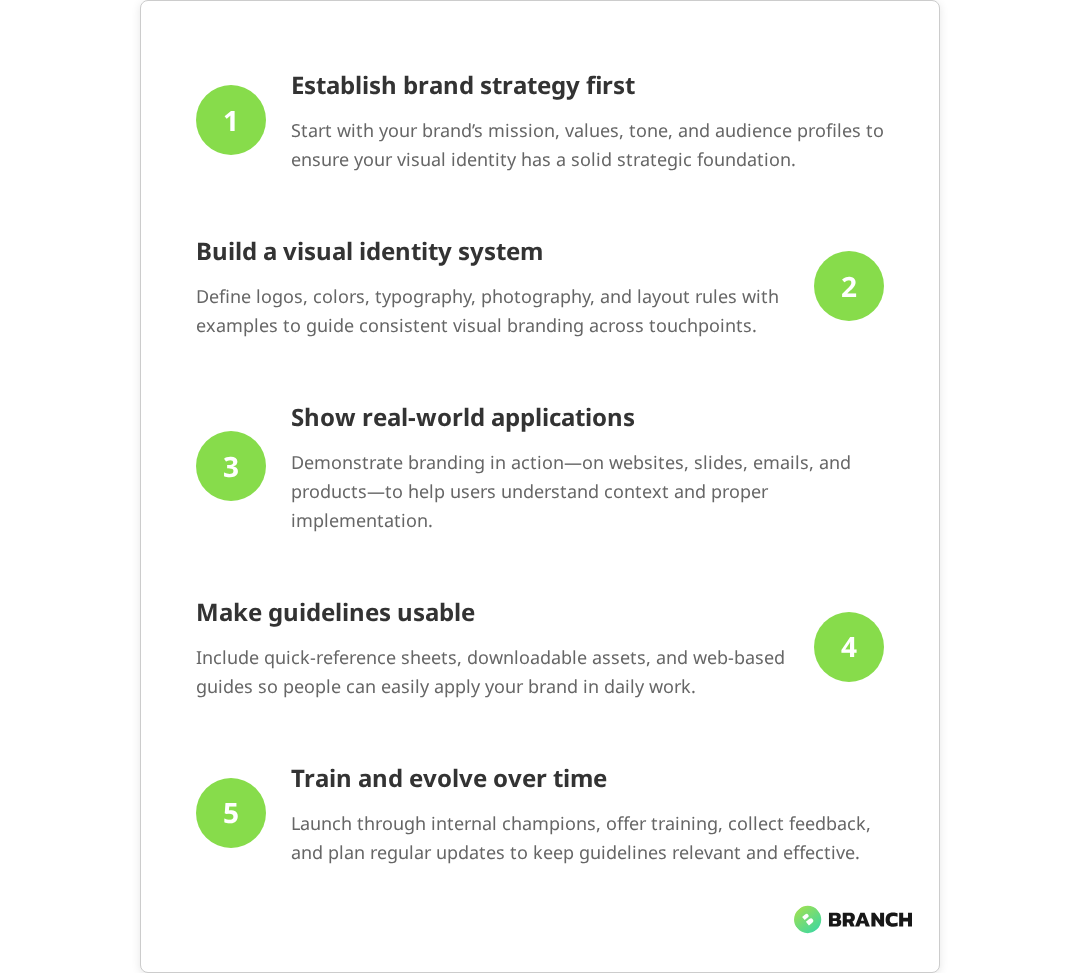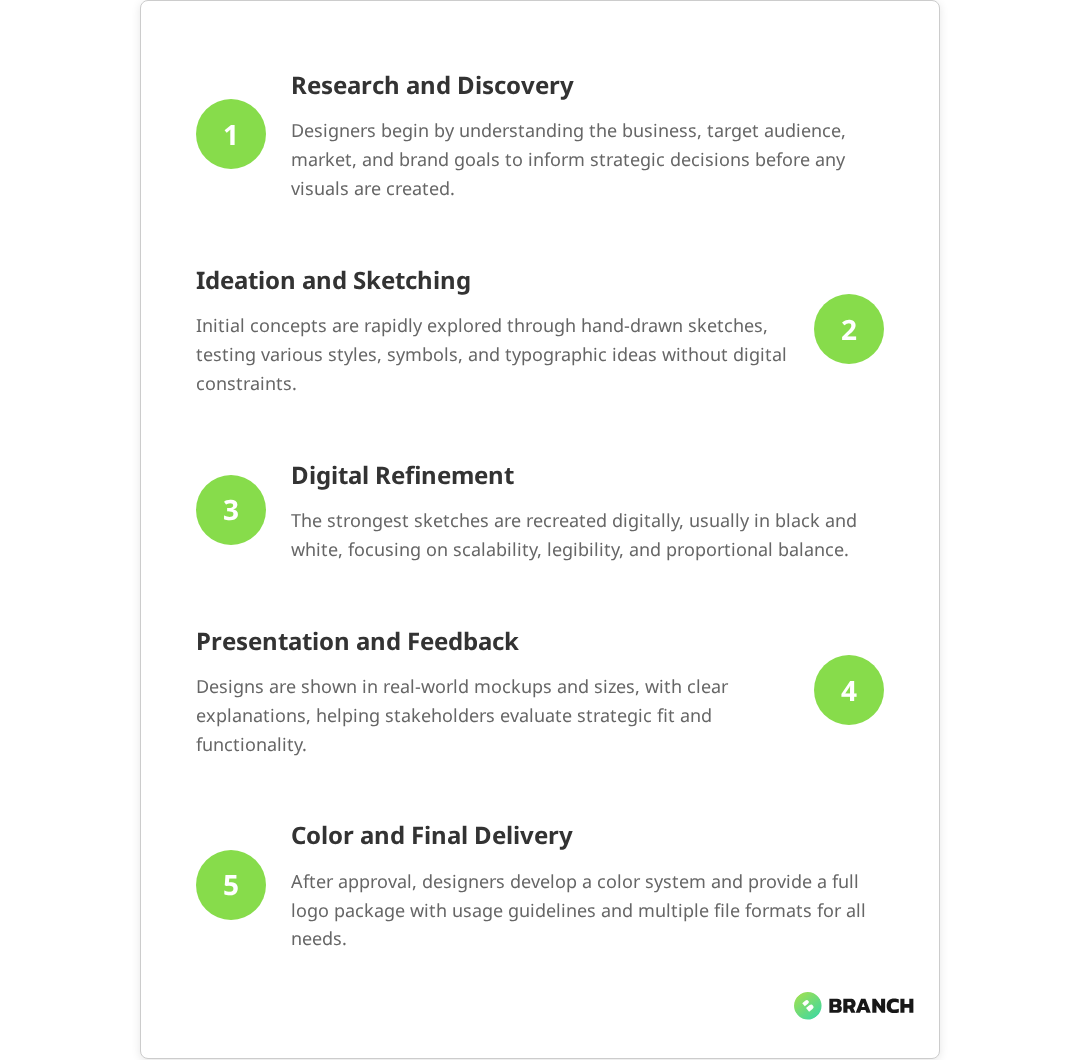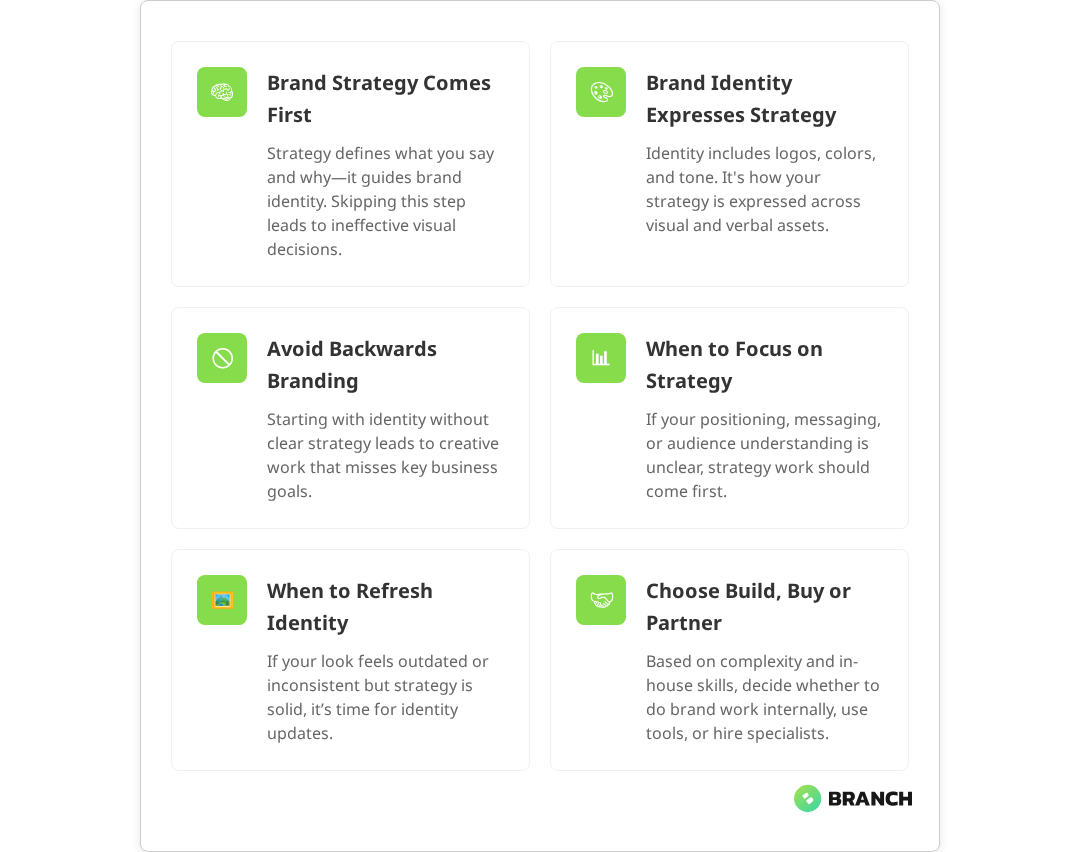Picture this: a potential customer discovers your company through a LinkedIn ad, visits your website, downloads a white paper, and then attends your webinar. At each touchpoint, they should feel like they’re engaging with the same brand—not four different companies that happen to share a name.
Brand consistency across channels isn’t just about using the same logo everywhere (though that helps). It’s about creating a cohesive experience that builds trust, recognition, and ultimately drives business results. Research shows that consistent brand presentation can increase revenue by up to 23% and foster stronger customer engagement. Yet many B2B organizations struggle with this, especially as their digital footprint expands and teams grow.
For digital decision-makers—whether you’re a CTO evaluating a rebrand, a marketing leader launching new channels, or an operations director coordinating across teams—understanding how to maintain brand consistency is crucial. When done well, it reduces confusion, accelerates recognition, and makes every marketing dollar work harder.
Why Brand Consistency Matters More Than Ever
In today’s fragmented digital landscape, your prospects encounter your brand across dozens of potential touchpoints. They might see your display ad on an industry publication, receive your email newsletter, browse your website, download your mobile app, and interact with your sales team—all in the span of a week.
Each inconsistency creates friction. When your website uses different fonts than your emails, or your social media voice doesn’t match your white papers, you’re essentially asking prospects to learn your brand multiple times. This cognitive load translates directly into lost opportunities, as psychological research shows that brand inconsistencies increase mental effort for consumers and reduce purchase intentions.
The challenge intensifies as organizations grow. Growth introduces challenges such as decentralized teams, communication silos, multiple departments, and external vendors all contributing to brand materials. Without clear systems and guidelines, brand drift becomes inevitable.
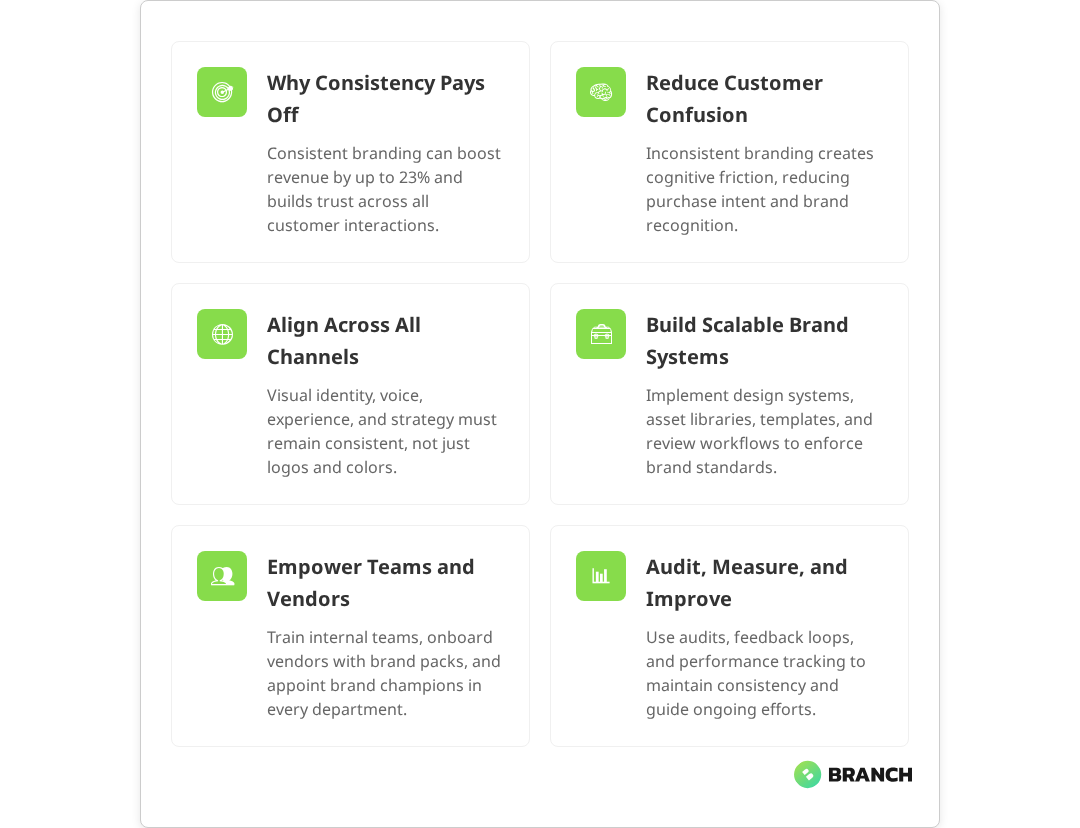
The Anatomy of Cross-Channel Brand Consistency
True brand consistency operates on multiple layers, and understanding these layers helps you prioritize your efforts. Multiple expert sources confirm that brand consistency encompasses visual identity, voice and messaging, customer experience, and overarching strategy:
Visual Identity Layer
This includes logos, colors, typography, imagery style, and layout principles. It’s the most obvious layer—and often the only one organizations focus on. But visual consistency alone isn’t enough.
Voice and Messaging Layer
How you communicate—your tone, key messages, and even the types of words you choose—should feel consistent whether someone’s reading your website copy or your LinkedIn posts.
Experience Layer
This covers how people interact with your brand across touchpoints. Navigation patterns, content organization, user flows, and even response times all contribute to brand experience.
Strategic Layer
Your core positioning, value propositions, and brand promises should remain consistent even as you adapt them for different audiences and channels.
Read more about developing a strategic foundation that supports consistent positioning across all channels.What the research says
- Studies demonstrate that consistent branding builds trust and recognition, with some research showing revenue increases of up to 23% for brands with consistent presentation across channels.
- Psychological research reveals that brand inconsistencies create cognitive load for consumers, making decision-making harder and reducing purchase intentions.
- Organizations struggle more with brand consistency as they scale, particularly when multiple departments, external vendors, and new team members contribute to brand materials without clear guidelines.
- Early evidence suggests that combining visual references with written guidelines helps reduce interpretive variation, though the optimal format for different organization sizes is still being studied.
- Cross-functional review processes and shared success metrics appear to improve brand consistency, but more research is needed on the most effective governance structures for different industries.
Common Pitfalls and How to Avoid Them
Most brand consistency problems aren’t the result of malicious intent—they’re the natural byproduct of growth and complexity. Here are the patterns we see most often:
The “Guidelines in a Drawer” Problem
Many organizations have beautiful brand guidelines that nobody actually uses. The PDF sits on a shared drive while teams create materials based on their best guess of what “looks right.”
The fix: Make guidelines accessible and actionable by creating templates that embed your standards, not just documents that describe them.
The “Interpretive Design” Trap
When new designers or vendors join your team without proper reference materials, they inevitably interpret your brand through their own lens. This leads to gradual drift as each iteration moves slightly away from your original intent.
The fix: Provide concrete visual references alongside written guidelines. Show examples of how your brand applies across different contexts and formats.
The “Channel Silos” Issue
Different departments often optimize for their specific channels without considering the broader brand experience. Social media develops its own voice, the website team focuses purely on conversion, and sales creates materials that feel disconnected from marketing.
The fix: Establish cross-functional review processes and shared success metrics that account for brand consistency alongside channel-specific goals.
Read more about developing visual identity systems that work consistently across diverse applications.Building Systems That Scale
Sustainable brand consistency requires systems, not just good intentions. Here’s how to build infrastructure that supports consistency as you grow:
| System Component | Purpose | Key Elements | Maintenance Effort |
|---|---|---|---|
| Design System | Standardize visual elements and interactions | Color palettes, typography, components, spacing rules | Medium |
| Asset Library | Centralize approved brand materials | Logos, images, templates, approved copy blocks | Low |
| Style Guide | Document voice, tone, and messaging standards | Writing principles, example copy, messaging hierarchy | Low |
| Template System | Enable consistent creation of new materials | Presentation templates, email layouts, social media formats | High |
| Review Process | Catch inconsistencies before they go live | Approval workflows, brand checkpoints, feedback loops | Medium |
Starting With Templates and Patterns
One of the most effective approaches is to identify recurring design elements and communication patterns across your channels. Instead of reinventing layouts and messaging for each new piece, create reusable templates that embed your brand standards.
This approach works particularly well for:
- Email newsletter layouts
- Social media post formats
- Presentation templates
- White paper covers and layouts
- Web page templates
Making Guidelines Actionable
The most successful brand guidelines aren’t just reference documents—they’re working tools. Consider creating:
- Quick reference cards for key brand elements that team members can keep at their desks
- Digital asset kits with pre-sized logos and graphics for common applications
- Copy paste messaging blocks for consistent boilerplate content
- Color and font files that can be directly imported into design tools
Technology and Tool Considerations
The right technology stack can either support or undermine your consistency efforts. Here are key considerations for different types of tools:
Content Management Systems
Your CMS should make it easy to maintain consistent layouts and styling. Look for systems that allow you to create and enforce templates, manage approved imagery, and control typography across all content.
Design Tools and Asset Management
Consider tools that allow teams to access approved brand assets directly within their workflow. Whether that’s a Digital Asset Management (DAM) system for large organizations or shared design libraries in tools like Figma for smaller teams.
Email and Marketing Automation
Your marketing automation platform should support consistent branding across all email communications. This includes template controls, approved image libraries, and the ability to maintain consistent sender information.
Social Media Management
Social media tools should support brand-consistent posting through template systems, approved hashtag sets, and consistent posting schedules that align with your overall brand voice.
Organizational Alignment and Processes
Technology and guidelines only work when people actually use them. Successful brand consistency requires organizational changes that make consistent execution easier than inconsistent execution.
Cross-Functional Brand Stewardship
Rather than making brand consistency solely a marketing responsibility, consider appointing brand champions across different departments. These champions can:
- Review materials before they go live
- Provide brand guidance to their teams
- Identify when new guidelines or templates are needed
- Serve as a feedback loop to improve brand systems
Onboarding and Training
Every new team member who will create customer-facing materials needs brand training. This isn’t just a one-time presentation—it’s an ongoing education process that should include:
- Hands-on practice using your brand tools and templates
- Review of common mistakes and how to avoid them
- Clear escalation paths when brand questions arise
- Regular refreshers as your brand evolves
Vendor and Partner Management
External partners—from PR agencies to event vendors—can either reinforce or undermine your brand consistency. Establish clear brand requirements in all vendor contracts and provide comprehensive brand packages that include:
- Current brand guidelines
- High-resolution logo files in multiple formats
- Approved messaging and boilerplate copy
- Examples of successful brand applications
- Contact information for brand questions
Measuring and Maintaining Consistency
Brand consistency isn’t a set-it-and-forget-it initiative. It requires ongoing attention and regular course corrections. Here’s how to build maintenance into your processes:
Regular Brand Audits
Schedule quarterly reviews of your major brand touchpoints. Look for drift in visual elements, messaging consistency, and user experience patterns. Document any inconsistencies and prioritize fixes based on customer impact.
Feedback Systems
Create easy ways for team members to report brand inconsistencies or request new guidelines. This might be as simple as a shared Slack channel or as formal as a ticketing system, depending on your organization size.
Performance Tracking
While brand consistency is hard to measure directly, you can track related metrics like brand recognition surveys, customer feedback about professionalism, and time-to-market for new branded materials.
When to Engage Specialists
Many organizations can handle basic brand consistency improvements internally, but there are situations where specialist help makes sense:
Consider specialist support when:
- You’re undergoing a major rebrand or merger
- Your current brand guidelines are outdated or incomplete
- You’re launching new channels or customer touchpoints
- Internal teams lack design or brand strategy expertise
- You need to coordinate across multiple departments or locations
A thoughtful digital partner can help you audit your current state, develop comprehensive brand systems, create templates and tools that make consistency easier, and train your teams on implementation. The investment often pays for itself through reduced design time and improved customer recognition.
Read more about comprehensive branding and design services that ensure consistency across all customer touchpoints.Moving Forward
Brand consistency isn’t about perfection—it’s about creating systems that make the right choices easier than the wrong ones. Start with your highest-impact touchpoints, build templates and guidelines that people actually want to use, and create feedback loops that help you improve over time.
The goal isn’t to eliminate all variation across your channels. Different channels serve different purposes and may require different approaches. The goal is to ensure that this variation feels intentional and aligned with your overall brand strategy, rather than accidental and confusing.
Whether you tackle this internally or work with specialists, focus on building sustainable systems rather than just fixing immediate problems. With the right foundation in place, brand consistency becomes a competitive advantage that compounds over time.
FAQ
How do I maintain brand consistency when working with multiple vendors and freelancers?
Create a comprehensive brand package that includes guidelines, logo files, messaging templates, and examples. Include brand compliance requirements in all vendor contracts and designate a single point of contact for brand questions. Consider requiring brand approval before final delivery of any customer-facing materials.
What's the most common mistake companies make when trying to improve brand consistency?
Focusing only on visual elements while ignoring voice, messaging, and user experience consistency. True brand consistency requires alignment across all touchpoints, not just matching colors and fonts. Many organizations also create guidelines that are too complex or inaccessible for daily use.
How often should we update our brand guidelines?
Review your brand guidelines annually and update them as needed when you launch new channels, change positioning, or notice widespread inconsistencies. Minor updates can happen quarterly, but major overhauls should be infrequent to avoid confusing teams and diluting brand recognition.
Should different product lines have different branding approaches?
This depends on your business strategy. If products serve very different audiences or markets, some variation may be appropriate. However, maintain consistent core elements like overall visual style, company positioning, and quality standards. Consider a 'branded house' approach with consistent parent brand elements and subtle product-specific variations.
How do we measure whether our brand consistency efforts are actually working?
Track metrics like brand recognition in surveys, consistency scores in brand audits, time required to create new materials, and customer feedback about professionalism. Also monitor internal metrics like how often teams ask for brand guidance or request new templates—decreasing questions often indicates better systems.


